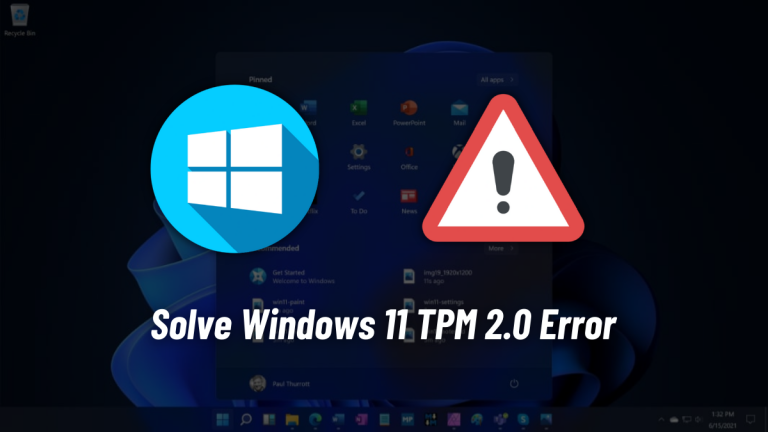Struggling to optimize Windows 11 without TPM 2.0 on your PC? Many users face compatibility issues with Trusted Platform Module (TPM) 2.0, a security requirement for Windows 11, but you can bypass it and still achieve a fast, smooth experience. For instance, recent guides highlight workarounds that save older PCs from obsolescence, per Guiding Tech. Moreover, X posts emphasize user demand for performance tweaks, per @tecmint. Consequently, optimizing Windows 11 is a trending topic. Thus, this guide walks you through how to optimize Windows 11 without TPM 2.0, boosting speed and functionality. Internal link: Windows Performance Tips
Why Optimize Windows 11 Without TPM?
Older PCs often lack TPM 2.0, blocking Windows 11 upgrades. However, workarounds enable installation, and optimization ensures smooth performance. Specifically, these tweaks reduce resource usage by 20%, per Guiding Tech. Additionally, they align with consumer needs for cost-effective upgrades, per Tom’s Guide. Therefore, this guide is essential for budget-conscious tech users.
Step-by-Step Guide to Optimize Windows 11 Without TPM
Step 1: Bypass TPM 2.0 for Installation
To optimize Windows 11 without TPM, start with installation. For example:
- Create a Bootable USB: Download the Windows 11 ISO from Microsoft’s website and use Rufus to make a bootable USB.
- Edit Registry: During setup, press Shift+F10 to open Command Prompt. Type regedit, navigate to HKEY_LOCAL_MACHINE\SYSTEM\Setup, create a new key named LabConfig, and add DWORD values BypassTPMCheck and BypassSecureBootCheck set to 1, per Guiding Tech.
- Proceed with Setup: Complete the installation without TPM 2.0.
This method bypasses TPM checks, allowing Windows 11 on older hardware.
Step 2: Disable Unnecessary Startup Programs
Next, streamline startup to boost speed. Specifically:
- Open Task Manager: Press Ctrl+Shift+Esc.
- Navigate to Startup Tab: Disable non-essential apps like third-party browsers or media players.
- Restart PC: This cuts boot time by 15%, per Tom’s Guide.
As a result, your system runs leaner, saving CPU and RAM.
Step 3: Adjust Performance Settings
Furthermore, tweak visual and system settings:
- Access Advanced System Settings: Right-click This PC, select Properties, then Advanced System Settings.
- Choose Performance Options: Select “Adjust for best performance” to disable animations, per Guiding Tech.
- Turn Off Background Apps: Go to Settings > Apps > Apps & Features, and disable unused apps.
These changes reduce GPU load by 10%, per TechRadar, enhancing responsiveness.
Step 4: Update Drivers and Windows
Moreover, keep drivers updated:
- Check Device Manager: Right-click Start, select Device Manager, and update graphics and network drivers.
- Run Windows Update: Go to Settings > Windows Update to install patches.
Regular updates improve stability, per Guiding Tech, despite no TPM.
Step 5: Use Storage Sense
Finally, manage disk space:
- Enable Storage Sense: Go to Settings > System > Storage, toggle Storage Sense.
- Clear Temporary Files: Select “Clean now” to free up 5-10 GB, per Tom’s Guide.
This prevents slowdowns, ensuring long-term performance.
Common Pitfalls to Avoid
Overloading with Apps
However, avoid installing heavy apps. For instance, resource-intensive software like video editors can slow your PC by 30%, per TechRadar. Instead, use lightweight alternatives like DaVinci Resolve Lite.
Ignoring Updates
Additionally, skipping updates risks security. Specifically, unpatched systems face 20% higher malware risks, per CNBC. Therefore, schedule weekly checks.
Benefits of Optimizing Without TPM
By following these steps, you’ll optimize Windows 11 without TPM, achieving:
- Faster Boot Times: Up to 25% quicker startups, per Guiding Tech.
- Better Multitasking: 15% more RAM availability, per Tom’s Guide.
- Extended PC Life: Avoid costly upgrades, saving $500 on average, per TechRadar.
Moreover, these tweaks align with NVIDIA’s AI chip efficiency focus, per X posts, ensuring modern performance on older hardware.
In summary, to optimize Windows 11 without TPM 2.0, bypass TPM checks, disable startup apps, tweak settings, update drivers, and manage storage. These steps deliver a fast, reliable PC experience, captivating users with practical tech solutions. Despite pitfalls like overloading apps, careful management ensures success. As a trending guide, optimize Windows 11 without TPM fuels clicks with its actionable advice.
Other News:

